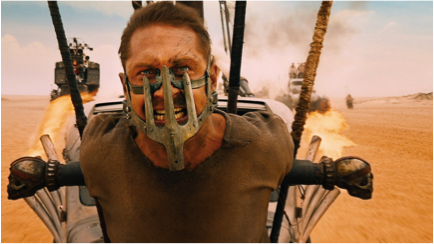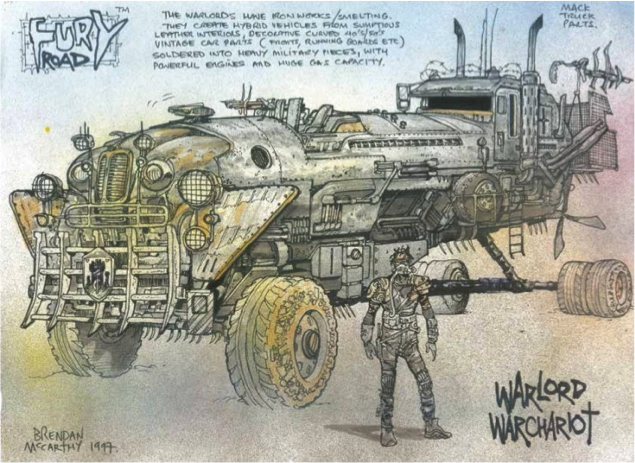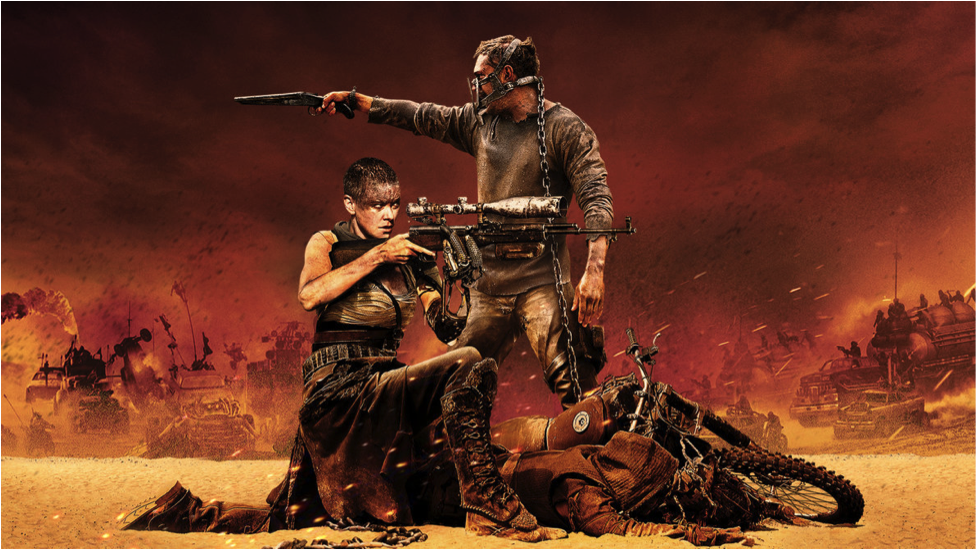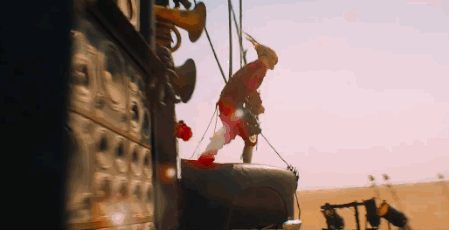“Mad Max: Fury Road” wasn’t exactly the type of movie that people expected to be the most well-reviewed film of the year, much less a serious contender for this year’s Best Picture Academy Award. The original series, starring Mel Gibson, is a bit of a cult favorite that has arguably not aged very well. In this decade of mindless action movies and formulaic reboots, “Mad Max” is a breath of fresh air, seamlessly navigating itself around the too-common mistakes made by other franchises, but not giving the audience one second to catch up and think about it until the movie is already over.
Directed by George Miller, “Fury Road” is as unrelenting as a movie can be. Not a moment is wasted, allowing the viewers to fully immerse themselves in this disorienting, wild world that Max finds himself in. There is not much in the way of exposition offered to the audience – to the movie’s strength – and very little dialogue either. Instead, the audience must fill in the blanks, make assumptions, and really just stop thinking altogether and enjoy the ride while it lasts.
 The film opens with Max, played by Tom Hardy, in a futuristic wasteland where cities and civilizations have ceased to exist. The hellish landscape provides an attractive backdrop for the story, which amounts to one, two-hour-long dramatic car chase, along with the little explanation provided concerning the state of the world. Max is taken to the Citadel, where the poor, desolate citizens are desperate for what little water is offered to them by Immortal Joe, the dictator-like presence in charge of the Citadel. Max tries to escape, only to be hauled off and strapped to the front of a vehicle, where he is affectionately known as, “blood bag.” He also has a face mask attached to his face, so if you really loved having no idea what Bane was saying in “The Dark Knight Rises,” then you’ll be fine with not understanding Tom Hardy once again. However, he doesn’t say much besides growl and grunt, so you’re not missing any long-winded, existential speeches on the state of Gotham or anything, so all’s good.
The film opens with Max, played by Tom Hardy, in a futuristic wasteland where cities and civilizations have ceased to exist. The hellish landscape provides an attractive backdrop for the story, which amounts to one, two-hour-long dramatic car chase, along with the little explanation provided concerning the state of the world. Max is taken to the Citadel, where the poor, desolate citizens are desperate for what little water is offered to them by Immortal Joe, the dictator-like presence in charge of the Citadel. Max tries to escape, only to be hauled off and strapped to the front of a vehicle, where he is affectionately known as, “blood bag.” He also has a face mask attached to his face, so if you really loved having no idea what Bane was saying in “The Dark Knight Rises,” then you’ll be fine with not understanding Tom Hardy once again. However, he doesn’t say much besides growl and grunt, so you’re not missing any long-winded, existential speeches on the state of Gotham or anything, so all’s good.
The car chase is where we meet Imperator Furiosa, played by Charlize Theron, the driver of the War Rig, that has gone off course, disobeying Immortan Joe’s orders. His henchmen follow the War Rig when it is discovered that Furiosa has with her the Wives, five women who are imprisoned by Immortan Joe and are condemned to be the carriers of his children. Furiosa has helped the women escape, in an attempt to return to her homeland where there are supposedly a lot of trees and women, and no one is fighting over water (yay!).
In an ordinary action movie, Furiosa’s character would normally be sidelined to the love interest of our hero and protagonist, Max. However, Theron commands the screen as if it were her name in the title, and not Max’s (as it should be). There is no inkling of romance between Max and Furiosa, because well, there’s no time for it, which seems odd since there’s literally probably thirty minutes of dialogue total in the entire movie. The lack of dialogue makes sense though, considering that the film began with a storyboard, rather than a script, like other movies. Furiosa and Max never overcome their initial hesitance or break out of the role of reluctant allies, something that benefits the film more than just about anything else. Furiosa is a certified badass and to see her sidelined to anything less would be a disservice not only to the character, but to the film as a whole, especially since Furiosa basically carries the plot and is easily the most dynamic character to watch on screen.
 George Miller, also nominated for Best Director at this year’s Academy Awards, pulled off an amazing feat with “Mad Max.” Not only making a quality action movie with actual character development, more than the token love-interest female, and getting a genre film nominated for ten Oscars (sci-fi/fantasy films never get nominated), but not a scene is wasted, a rare feat for a genre film. Not literally, of course, but the entire film is saturated with his tastes, choices, and spirit. Not one moment feels artificially created in some studio executive boardroom, concerned with the marketability to the masses. Instead, Miller focuses on making a super weird, super fun action movie, which could have ended disastrously, but actually paid off. CGI was used sparingly, tastefully, and some of the most outrageous stunts were not CGI, but actually performed.
George Miller, also nominated for Best Director at this year’s Academy Awards, pulled off an amazing feat with “Mad Max.” Not only making a quality action movie with actual character development, more than the token love-interest female, and getting a genre film nominated for ten Oscars (sci-fi/fantasy films never get nominated), but not a scene is wasted, a rare feat for a genre film. Not literally, of course, but the entire film is saturated with his tastes, choices, and spirit. Not one moment feels artificially created in some studio executive boardroom, concerned with the marketability to the masses. Instead, Miller focuses on making a super weird, super fun action movie, which could have ended disastrously, but actually paid off. CGI was used sparingly, tastefully, and some of the most outrageous stunts were not CGI, but actually performed.
“Mad Max: Fury Road,” for all its insanity, immediately picks up and starts following a rhythm, never stopping for a beat to try to explain itself to the audience, only continuing along the rhythm until the end. It’s a colorful, chaotic film that somehow echoes the old silent films of Hollywood. There are no monologues, the dialogue is kept simple and sparse, and it feels like the story keeps going along its path, no pausing for a breath, or a word, but the action keeps going on. “Mad Max” doesn’t weight itself down trying to be serious (more like trying to be the next “The Dark Knight”), it doesn’t waste its time on world-building or pandering to fans and studio executives alike. “Mad Max” wasn’t trying to be anything more or anything less than what it is: a genuinely fun, exciting movie to watch that captures nothing more than the raw story.
“Mad Max: Fury Road” took home ten Academy Award nominations, including Best Picture and Best Director, second only to The Revenant’s twelve nominations. It’s pretty unlikely the the film will win Best Picture while contending with both “The Revenant” and “Spotlight,” while George Miller will be facing off against Alejandro Iñárritu, who is likely to take home the Best Director prize after last year’s win for “Birdman.” However, by virtue of making a film like “Mad Max,” the people behind the film don’t exactly strike me as the kind who care about the Oscars.
You know who else doesn’t care about winning an Oscar?
This guy.


